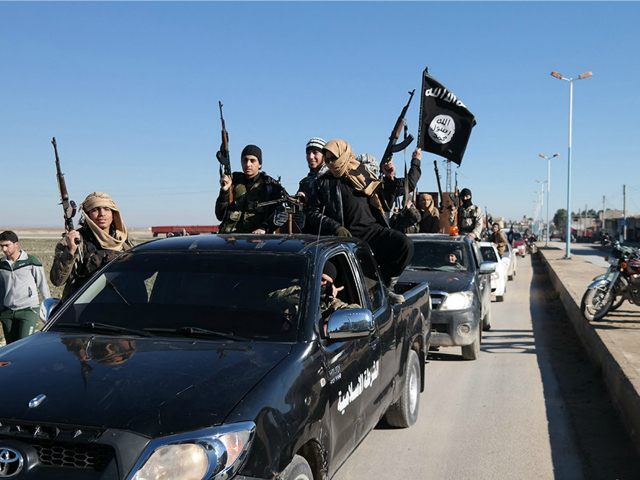An American special forces soldier was killed while combating Islamic State (ISIS/ISIL) jihadists in their Afghanistan stronghold, located in the eastern part of the country along its border with Pakistan, revealed the U.S./NATO-led international coalition.
Update: The Pentagon has identified the Green Beret hero as Staff Sgt. Mark De Alencar, 37, of Edgewood, Maryland.
”The soldier was mortally wounded late Saturday during an operation in Nangarhar Province” in eastern Afghanistan, wrote American Navy Capt. Bill Salvin on the official Twitter account of the international mission against terrorism in Afghanistan, dubbed Resolute Support.
Capt. Salvin is the Kabul-based director of public affairs for the U.S./NATO-led coalition.
The coalition’s headquarters in Kabul identified the deceased soldier as a member of the U.S. special forces team fighting ISIS jihadists along Afghan security forces in Nangarhar’s Achin district.
Nevertheless, Reuters notes that the circumstances surrounding the death of the U.S. special forces soldier remain unclear.
Capt. Salvin said more information could be released later. As usual, the Pentagon is withholding the late soldier’s identity, pending notification of next of kin.
“On behalf of all of US. Forces — Afghanistan, I offer our deepest condolences to the family and friends of our fallen comrade,” said American. Gen. John Nicholson, the top commander of U.S. and NATO troops in Afghanistan, in a statement. “We will always remember our fallen comrades and commit ourselves to deliver on their sacrifices.”
The recent fatality brings the total number of U.S. military deaths since the war started more than 15 years ago to at least 2,249, the vast majority of which occurred under former President Barack Obama’s watch, Pentagon data shows.
There have been another 20, 210 injury incidents during the ongoing war, of which about 90 percent occurred during the previous administration.
Late last month, Capt. Salvin vowed that the U.S.-NATO-led coalition intends to defeat the ISIS branch in Afghanistan this year, noting that the number of jihadists in the country linked to the terrorist group has plummeted.
“Our goal in 2017 is to defeat ISIS-K in Afghanistan,” Capt. Salvin told Voice of America (VOA).
“In 2016, we believed that year began with about 3,000 or so ISIS-K members in about 12 districts in southern Nangarhar,” added the American Navy captain. “Right now, we believe there are about 600 ISIS-K members in two or three districts in southern Nangarhar.”
The drop in ISIS terrorists in Afghanistan marks an estimated 80 percent reduction.
Known as the Khorasan Province (ISIS-K), the Islamic State officially established its presence in the South Asian region back in January 2015, less than a month after former President Obama and NATO declared an end to their Afghan combat mission, a move that came along with the withdrawal of most coalition forces.
ISIS and the Taliban are believed to have cooperated in some regions of Afghanistan and fought one another for turf and influence in others.
The Afghan Taliban remains the largest and strongest jihadist group in the Afghanistan-Pakistan region, which the U.S. military has said is home to the largest concentration of Islamic terrorist groups in the world.
According to the U.S. military, opium-rich Nangarhar province is ISIS’s primary stronghold in the Afghanistan-Pakistan region.
Taking a page from the Taliban’s playbook, ISIS is believed to be generating millions from the illicit opium trade in Afghanistan, the world’s top producer of the illegal drug and its heroin derivative, recently wrote Joseph Micallef, a world affairs expert, in an op-ed published by Military.com and other outlets.
Gen. Nicholson said last December that as much as 60 percent of the Taliban’s revenue comes from the illegal opium business.
In its latest assessment of the drug’s cultivation in Afghanistan, the United Nations identified ISIS’s stronghold Nangarhar as one of the country’s top five opium-producing provinces, after Helmand, Badghis, Kandahar, and Uruzgan, respectively.

COMMENTS
Please let us know if you're having issues with commenting.